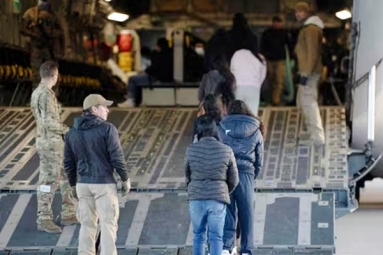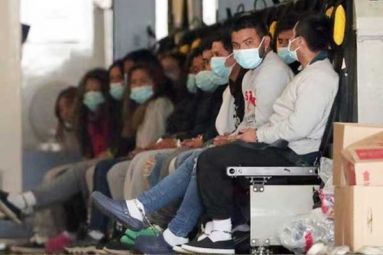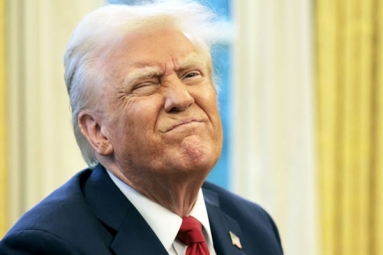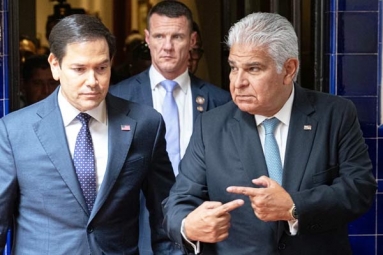Namrata Verghese’s ‘Juveline Immigrant’ Captures Diaspora Experience
September 25, 2019 05:06
(Image source from: Firstpost)
From being largest diaspora in the world to turning up at Narendra Modi’s recent Houston event in huge numbers, Indian diaspora has been in news for quite some time now. The newest writer to consider this subject is debutante novelist Namrata Verghese.
‘The Juvenile Immigrant’, by this India-born author is the sparkling collection of short stories pointing up infidelity, mental illnesses, and racial identities. Verghese also explores the themes of dislocation and disruption.
In an interview with Firstpost, the young author talks over her characters, their trajectories and what the American Dream stand for the people of Indian origin in 2019.
Upon asking why she opted for short stories as a form in The Juvenile Immigrant, Varghese said she started writing them since her high school years whenever the mood struck her. Down the line, though she never made the conscious decision to write a short story collection, she saw how connected the pieces were - a realization that motivated the publication.
She believes short fiction was the right choice for her first book, sine the form allowed her to experiment and play with voice, perspective, and length in a way that is more difficult in a longer form, like a novel.
Varghese says in the United States, immigrants are time and again referred to with a prefix before the word ‘American’ (for instance Indian-American, Chinese-American, etc) and regardless of their existence in America all through generations, they will never be able to get rid of that prefix.
I imagine the hyphen between the two halves of immigrant identities as a see-saw; you can lean closer to “Indian” or “American,” but you’ll always be both.
In fact, she thinks the identity of two halves (Indian-American), even though far from being mutually exclusive, serve to inform and enrich each other.
Speaking of racism, which was brought to fore in Juvenile Immigrant, the author says racial discrimination has been present everywhere since ages but the only difference is that now we’re more vocal about calling it out.
The world has always been structured hierarchically; there has always been a privileged class that advances at the expense of an oppressed class. Racism is just one example of this (others, of course, include casteism, sexism, and so on), but, in contemporary America, it’s a particularly charged example.
When Firstpost asked the author the younger generation in the United States views their parents’ motherland, she says:
We tend to fetishize certain symbols and customs - henna, Bollywood, the example of the sari from the story - as stand-ins for a connection to our heritage because barriers such as language and distance hinder our active participation in our culture.
Referring to a popular Facebook meme page ‘Subtle Curry Traits’, she says it is one of the best examples of diasporic attachment to the country of origin. It includes Indians from widespread corners of the world, from Australia to the United Kingdom, but we all laugh at the same jokes about the similarities in our upbringings; we all bond over our peculiar and particular relationship to our home country.
When asked what prompts her to include incidents beef ban in the book, Varghese says:
As writers, we’re lucky to have platforms where we can actually spread ideas that need to be talked about, actually reach people who might care. When I write about the beef ban, or Trump’s election, or Srinivas Kuchibhotla’s murder, I’m trying to tie these watershed moments into broader commentary that my stories incorporate. I include these moments when they feel necessary to the story - when they become urgent.
When asked how people in the United States view Indian-Americans, the author says Indian immigrants, who occupy a strange position in America's racial landscape, in the past have been propped up as the ‘model minority’ - well-educated, well-off immigrants who keep their heads down and don’t spark off problems. She believes this stereotype isn’t just inaccurate, but also harmful as it is used as a way to vie with Indians against other minorities in America, especially Black people, and it’s baleful for Indians themselves.
Within the demographic of Indian-Americans, there are Indians who are American citizens and Indians who are undocumented, Indians who have doctorates and Indians who don’t have a high-school education. Unfortunately, I think Indians in the United States are still overwhelmingly perceived as the “model minority,” but hopefully - especially with public figures like Kamala Harris and Atul Gawande shedding light on the many and varied ways to be Indian-American - that is changing.
Speaking about how the American Dream has changed for Indians in 2019, Varghese says:
“It sounds like the early American Dream for Indians was simply making it to America, the land of (ostensibly) unlimited opportunities. These days, the American Dream has shifted from the periphery to the center: as Hasan Minhaj says, we now have the "audacity of equality". We now claim this country, rather than waiting for this country to claim us. We assert our humanity on our own terms. You see this in the stunning rise of Indian-American representation, from media to business. These influential figures are not simply passive consumers of the American Dream, but active shapers of it. They demonstrate that Indians are now integral to, not tangential to, modern America.”
‘The Juvenile Immigrant’ sheds light on disorders and triumphs of Indian immigrants, especially Malayalees, in the United States of America.
 (Image source from: Facebook/Namrata Varghese)
(Image source from: Facebook/Namrata Varghese)
Click here for full interview
Courtesy: First Post
By Sowmya Sangam







